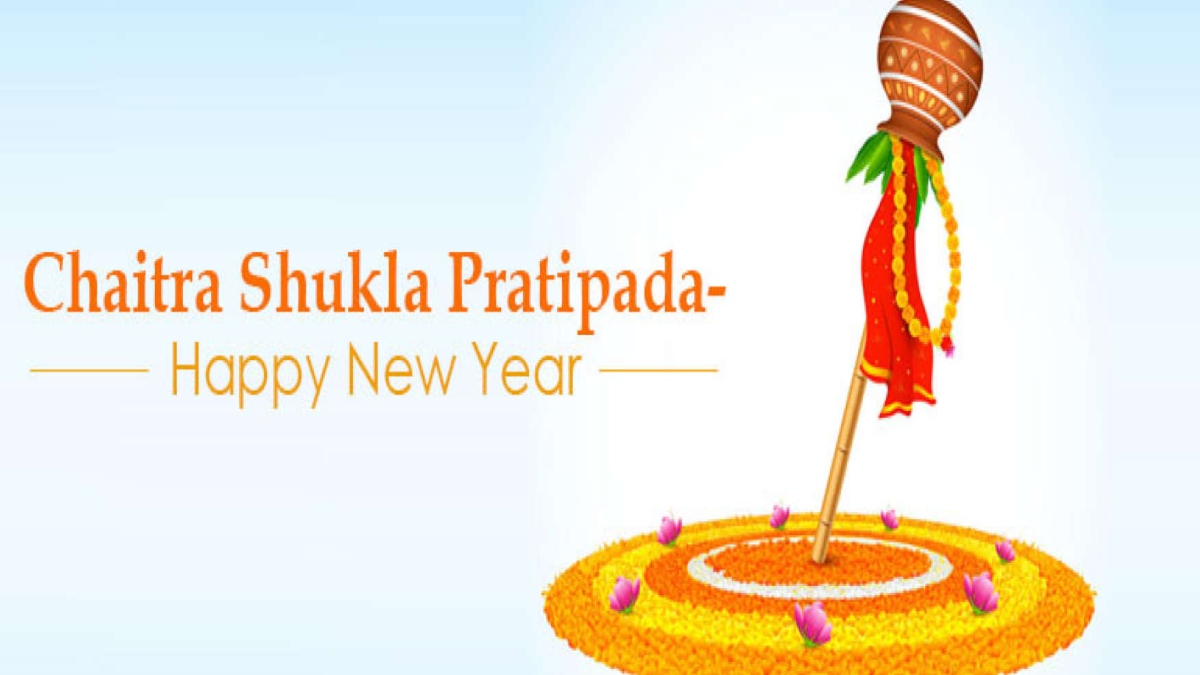


Nav literally means new. In a broader perspective, novelty is the emergence of a moment. In Indian culture, Kaal (time) is moving at a circular speed, so the beginning of creation is a symbol of innovation. From a practical point of view, time is divided into various units. Second, minute, hour, day, month, year, era are all practical units of time. Time rotates in these units at a circular pace. Indian culture is a festive culture, so any new concept is also welcomed with great enthusiasm and joy in Indian culture. New Year is also such a festival, which the whole world celebrates with great enthusiasm. Here it can be doubted that when time is moving in a circular motion, then any period can be considered as the beginning of a new year. We have to consider some points, such as-1. The beginning of the Indian calendar 2. The communication of novelty in nature 3. Human-friendly weather 4. The beginning of a particular event etc. After considering all these facts, the new year of any geographical or cultural area we can determine the new year by considering the geographical, cultural, chronological-based facts of India respectively. First of all, considering the calendar or Panchang, we come to know that our Indian calendar has been tampered with many times. In order to establish uniformity of time in the whole world, the calendar of each country was tampered with so much that their original form changed completely. In Indian calendar, the month starting from Chaitra has been shifted to January. Starting from January, when we come to September, October, November, December, then the month of September is 9th, October 10th, November 11th and December 12th. Whereas knowing their meaning from the linguistic point of view should be September (sapta i.e. seventh), October (Oct i.e. eighth), November (nav i.e. ninth) and December (deck i.e. 10th) months. Why is there a difference of 2 in the number of each month? On considering this, it can be said that the Indian month tradition of Chaitra, Vaishakh has been forced on January and February. The trend also changed the calendar. Now the question to consider is that if the English months are changed, then should we celebrate our festivals accordingly or consider the dates of festivals from Indian point of view. Apart from the calendar, the other point is the communication of novelty in nature, so even after assuming the beginning of the year from January, there is no innovation in the nature, but on the contrary, the trees remain dry by dropping their leaves in the severe cold, the wrath of the whole nature and Humans are frightened by the cold wind. Therefore, there is no natural logic to celebrate the New Year in January. It is clear from the fact that there is no man-friendly weather in January. The beginning of any cultural event is also not visible in the month of January, whereas many events start from the Pratipada of Chaitra month. Chaitra month is the first month in Vikram Samvat. In the Indian time calculation system, the names of the months are based on the constellations. The changing of the month depends on the lunar cycle, the constellation on which the moon is located, that month is named on the basis of that constellation. On the full moon of Chaitra month, the moon stays in Chitra Nakshatra, hence this month is called Chaitra month. Sun enters Aries in the month of Chaitra.
Chaitra month has special significance in Indian culture. It is believed that Brahma ji, the creator of the universe, started the creation of the universe from the Shukla Pratipada of Chaitra month. At the same time, the beginning of Satyug is also considered to be from the month of Chaitra. On the Pratipada of Chaitra month, Matsyaavatar, the first incarnation of the Dashavatars of Lord Vishnu, appeared and took Manu to a safe place surrounded by the deluge. From which a new world started after the Holocaust. According to the belief of the scriptures, on the day of Chaitra Shukla Pratipada, Brahmaji started the creation of the universe. Lord Rama and Adi Shakti Devi Durga have appeared in this month that is why this month is considered the best. The festival of Navratras and Matsya Jayanti are also celebrated in this month. It is believed that Lord Vishnu took the Matsya avatar, the first of the Dashavatars, to take Manu’s boat to a safe place from the bottomless waters during the doomsday. At the end of the Holocaust, the creation began from Manu. Thus, considering all the above reasons and facts, it is known that it is scientific and logical to celebrate the Indian New Year on Chaitra Shukla Pratipada.
Dr Ayush Gupta is Assistant Professor, University Department of Sanskrit, Tilkamanjhi Bhagalpur University.